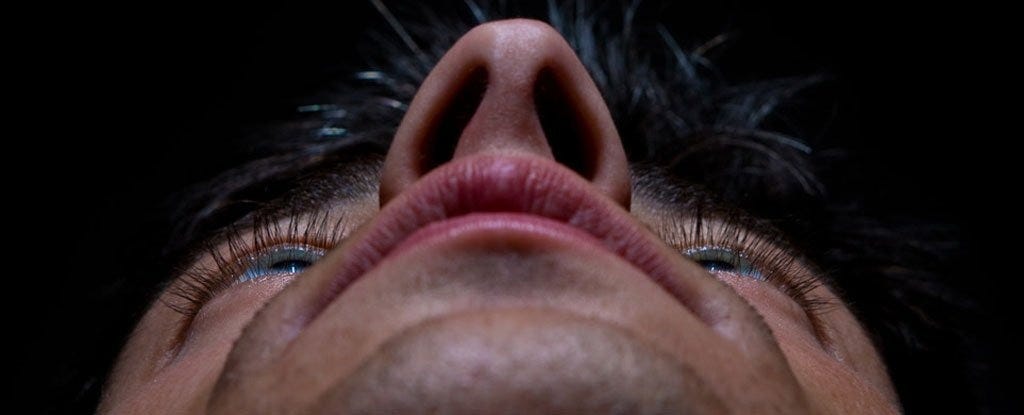As we are about to tweak our A&P syllabus for the new term, here are some things to listen to that may spark some ideas. And scrolling down, you’ll find lots of other interesting updates and ideas in science and education.
The A&P Syllabus
These episodes of The A&P Professor podcast for teaching anatomy and physiology include segments that help us think in new or expanded ways about our course syllabus. Or maybe they just confirm what we’re already doing. As you walk your dog, shovel your sidewalk, or clean up after that wild New Year’s party, have a listen…
To listen, click any of the “syllabus” episodes in the player (if visible) or go to theAPprofessor.org/podcast-syllabus.html
LEARNING GOALS FOR STUDENTS IN HUMAN ANATOMY AND PHYSIOLOGY
Adopted 1992, Revised 2020
Guidelines - The guidelines are meant to be used for overall course and curriculum development. See Target Audience, Clarification of Intent, and History of this Document.
Goals - The goals form the unifying foundation for all topics in anatomy and physiology (A&P) and are to be emphasized throughout Anatomy and Physiology I and II. These overarching goals have given rise to the detailed and measurable learning outcomes.
Learning Outcomes (LOs) - The LOs document contains over 800 statements about the specific course content (organized by module, ex. body system) that can be used to measure student mastery of that content. Instructors will not be able to incorporate all of these into a two-semester A&P series of courses, but should make attempts to include as many as possible. Some LOs may be covered in other courses (Chemistry, Cell Biology, etc.) within a particular curriculum. The LOs are found on the society’s webpage.
Damar Hamlin's Cardiac Arrest: A Cardiologist's Perspective
Commotio cordis has rarely been described as the result of a tackle in football
In this breaking news video, Mariell Jessup, MD, chief science and medical officer of the American Heart Association, gives an overview of the various conditions that could have caused the cardiac arrest of NFL player Damar Hamlin during Monday night's game.
Claudio Sericano
The truth behind melatonin and why it may not help you sleep
lions of people take melatonin to help them nod off, treat jet lag and cope with night shifts, but new evidence suggests we may have misunderstood the hormone and how to use it effectively
So, you may be surprised to hear that nearly a quarter of a century ago, researchers writing in the journal Cell cautioned against “melatonin madness”. “Melatonin’s [sleep-inducing] capability has… been embellished,” they wrote. “The cure for melatonin madness is to ignore the hyperbole and histrionics and focus instead on hypothesis testing and sound science.”
Read more→ AandP.info/t85
(Per Olesen/Flickr, CC BY-SA 2.0)
We May Finally Know Why Some People Don't Recover Their Sense of Smell After COVID
It's well known that having COVID-19 can affect your sense of smell, but in some cases, that olfactory function doesn't properly return. Now new research explains why.
The SARS-CoV-2 infection prompts an ongoing immune system attack on the nerve cells in the nose, the new study states, and there's then a decline in the number of those nerve cells, leaving people unable to sniff and smell as they usually would.
As well as answering a question that baffled experts, the research could also help our understanding of long COVID and why some people cannot fully recover from COVID-19.
Read more→ AandP.info/7gq
People queuing to be vaccinated in Taipei, Taiwan, in April 2022 | SAM YEH/AFP via Getty Images
Why we probably won't get new covid-19 vaccines in 2023
Any new covid-19 vaccine must be better than the ones we already have, setting a high bar for approval that is not expected to be met in 2023
“There is a possibility that the vaccines are updated again and, if that were the case, we’d expect it to be for the following booster campaign in autumn/winter next year,” says Matt Linley at Airfinity. “But this depends on how the variants evolve over time.”
Read more→ AandP.info/pe3
A natural mouse embryo (top) and synthetic mouse embryo (bottom) at about eight days of development show similar brain formation (bright pink and orange represent different regions in the brain). | AMADEI AND HANDFORD
COVID-19 may continue to dominate headlines, but this year’s biomedical advances weren’t all about “the Rona.” 2022 saw fruitful and seemingly fantastical research that could one day mean good news for patients.
Read more→ AandP.info/rh7
Illustration by Ben Wiseman
The Case for Wearing Masks Forever
A ragtag coalition of public-health activists believe that America’s pandemic restrictions are too lax—and they say they have the science to prove it.
Although the group has been scathing in its critiques of the C.D.C., it has received support from respected institutions in the public-health world. It has also received blue-chip funding from organizations such as the Kresge Foundation, which focusses on expanding opportunities in American cities, and the Robert Wood Johnson Foundation, one of the most influential health-focussed philanthropies in America, which gave the group a hundred and fifty thousand dollars. As it happens, Robert Wood Johnson’s C.E.O., Richard E. Besser, is a former acting director of the C.D.C.
Read more→ AandP.info/rix
This year, many people discarded COVID-19 protections even though the pandemic continues. | KATTY HUERTAS
Why pandemic fatigue and COVID-19 burnout took over in 2022
In Year Three of the coronavirus, the focus shifted from public health to individual health
“We didn’t warn people about fatigue,” says Theresa Chapple-McGruder, an epidemiologist in the Chicago area. “We didn’t warn people about the fact that pandemics can last long and that we still need people to be willing to care about yourselves, your neighbors, your community.”
The bottom line: People may have stopped worrying about COVID-19, but the virus isn’t done with us yet. “We have spent two-and-a-half years in a long, dark tunnel, and we are just beginning to glimpse the light at the end of that tunnel. But it is still a long way off,” WHO’s Tedros said. “The tunnel is still dark, with many obstacles that could trip us up if we don’t take care.” If the virus makes a resurgence, will we see it coming and will we have the energy to combat it again?
Read more→ AandP.info/p9n
(enot-poloskun/iStock/Getty Images Plus)
The L Word
Any serious effort to engage faculty in the student success movement will require grappling with the realities of faculty labor and limits on their time, Jody Greene writes.
I was pleased to wake up one morning last week to find Steven Mintz’s blog post for Inside Higher Ed “The F Word” awaiting me in my inbox. The piece argues forcefully for the need to place faculty at the forefront of the student success movement. Given that faculty are in charge of instruction, curriculum design and mentoring, it’s hard to imagine how we can accomplish anything like the transformation in higher education that the current focus on student success will require without faculty playing a leading role.
So where’s the problem? The problem is the one word missing from Mintz’s analysis: the L word.
Any institution—especially a research-intensive institution—that wants to get serious about student success is going to have to take on the wicked problem of faculty labor.
Read more→ AandP.info/l7a











